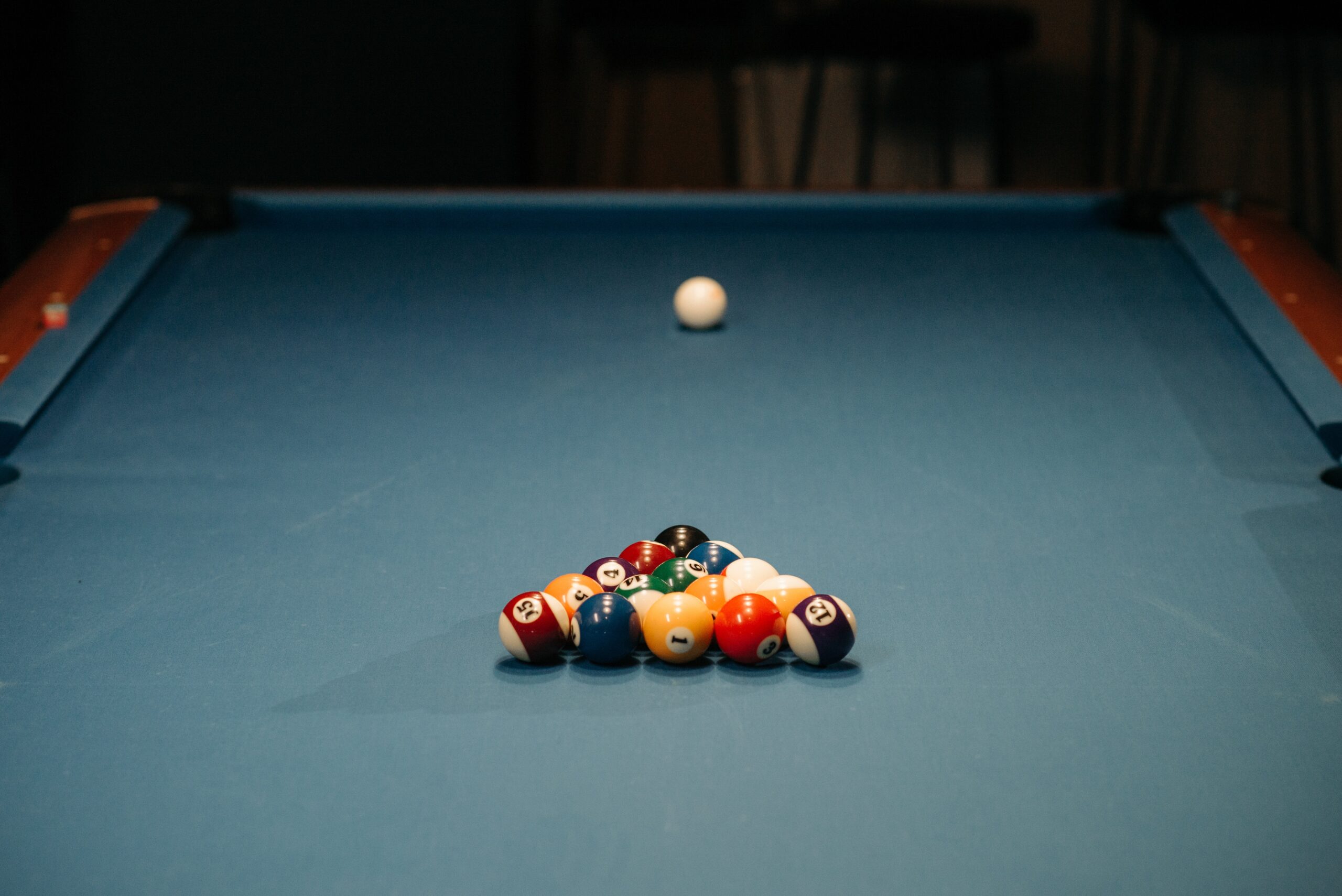What is a Billiard table?
Generally speaking, a billiard table is a table covered with a heavy cloth with six pocket holes along the perimeter, which are mostly used in the games like snooker, pool, or billiard. A ball is hit with the end of a long, slender stick (may be called a cue), causing it to roll into other balls and knock them into holes (pockets) around the ends of the playing table. A short wall (rail) around the perimeter of the table retains the balls in the playing area. The rail is met with a rubber cushion so balls that raid it rebound certainly and calculatedly and remain in play. There are a few distinct stipulations for equipment acceptance including maximum permissible seeming rebounds under a stated vertical force, surface flatness forbearances, size and shape necessities for the rubber cushion and the pockets, and conformation necessities for the playing surface and its cloth covering.
History of Billiard Table:
The beginning of billiard table is indeterminate. The most shared theory is that around the 15th century, tables were used in France and England for an indoor form of a lawn game akin to croquet. A ball (bille in French) resting on the table is heaved with a stick (billart in French), in edict to push the ball through a wire gate to strike a wooden peg. The purpose of six pockets around the boundaries of the table is uncertain. The vertical walls (banks in English) around the edges keep balls from dropping off the table. The first recorded billiard table was the one sold to the King Louis XI of France in 1470.
And then the Billiard table was industrialized instantaneously in England. The rules of the game were speckled from one place to another place, as described in The Complete Gamester, a book circulated in England in 1674. By that time, the club-shaped billiard had evolved into a slender cue. It took another century for the wire gate and upright wooden peg to gradually disappear from billiard tables. Because playing surfaces were made of wood, they had a propensity to twist. As players initiated to deliberately rebound balls off the table's edge walls, builders began to pad the banks with cloth stuffed with horsehair or rags.
During the 1700s, billiards endured to be prevalent in France and England and caught on in the United States. The size of the tables was wide-ranging, but the 2:1 ratio of length to width became standard. Whereas the rails were crept with tightly rolled cloth, producing a rather more predictable ball rebound.
Afterward, the Industrial Revolution further donated to a sequence of enhancements to the billiard table. Between 1800 and 1850, chalk was first used on cue stick ends to upsurge friction, leather cue tips were invented, diamond-shaped sights were added to rails, slate was presented as a superior table surface, and vulcanized rubber (which upheld its belongings irrespective of temperature vacillations) was rapidly modified for rail pads.
Ensuing modifications in pool tables are related chiefly to building procedures. For example, in older tables, horizontal holes were penetrated in the slate edges and chock-full of molten lead; screws on the trot through the vertical edge of the rail were constricted into the lead-lined hole. In comparison, rails are attached to modern tables by implanting a bolt precipitously through a hole in the slate and narrowing it into the bottom of the rail, pulling the rail and slate together comfortably. Likewise, in older tables, brass dowel pins were implanted into lead-lined horizontal holes pierced into the edges of the three slate sections where they would join to form the playing surface. In modern tables, the slate sections are held firmly together by attaching them to a wood frame, and joints are usually sealed with hot wax.
Read more: All about Air Hockey
How Much Space Do You Need for a Billiard Table?
If you are in the process of crafting your very own retreat at your cozy home or are considering fitting a billiard table in your perfectly designed bar or pub, we can help you at SZX billiards.
It is imperative to note that billiard tables take up a lot of space themselves. But, you must not disremember the space required for the cue and the person taking the shot!
The 5ft-7ft British tables are certainly more squashed. You can easily squash them into slighter spaces.
Top Tip: A billiard table needs a satisfactory cueing space around it, with the perfect cueing space being 1500mm all round and a minimum of 1400mm for a full size 57” Cue.
If there are any pinch points in the room/space then the occasional shots would require a slightly shorter 48” or 54” cue. Even though as you well know, you can often just rise the end of the cue to gain even more space.
Conclusion:
If you are looking for a billiard table, you have come to the correct place. The team here at Huizhou Double Star Sports Goods Co., Ltd. have been producing our standard tables and pool tables for over 25 years. Throughout the whole time, our different types of tables have been used for leisure purposes into variable diverse places. We are professional sports good designers, providing all the related goods to various countries across the planet. Our team here at SZX Billiards is innovative, expert in design orientation, and passionate about their craft of making perfectly designed tables for you. We try to ensure everything is skillfully and dexterously synchronized from preliminary design concept to customer delivery. So if you are looking for a table that will leave your guests in wonder, then this table is the one for you. There is no enhanced way to call off dinner or a night party, then end it with an exciting game. So once you have completed your meal, grab yourself a cocktail or mocktail and can simply shift the scene and commence to plunge into a great game of billiard.



